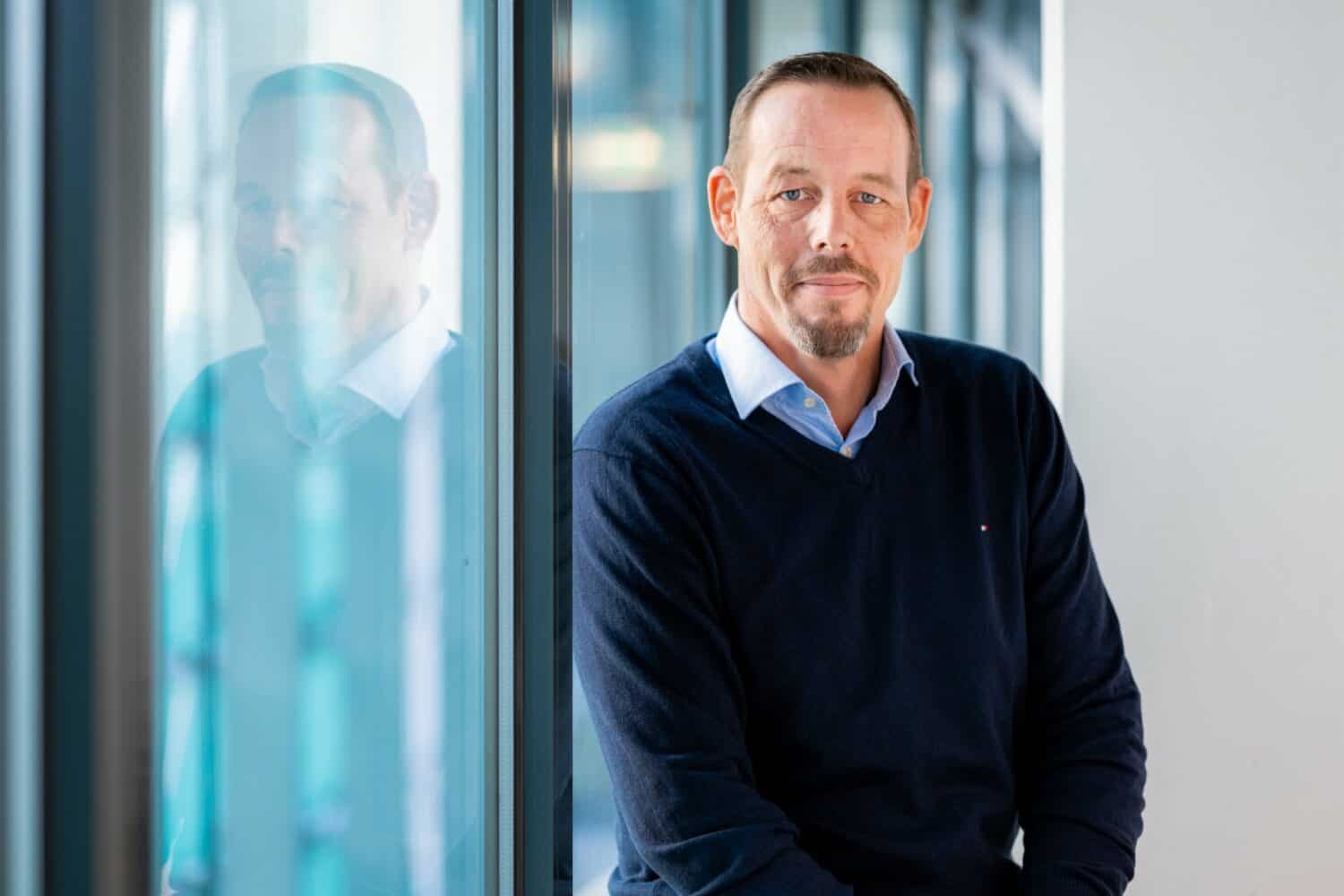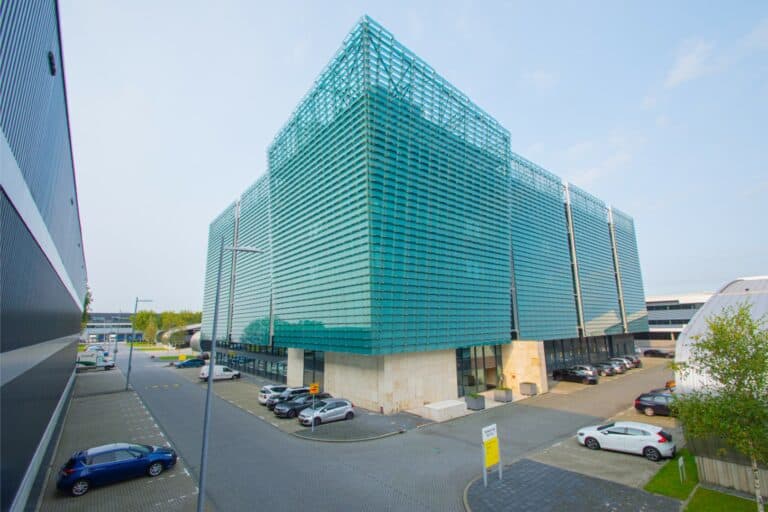Sustainable data centers, it sounds like an oxymoron. It is not, however, we hear from Jarno Bloem of NorthC Datacenters (NorthC). In fact, data centers play a very important role in the discussion around sustainability. We recently sat down with him to discuss this.
Jarno Bloem is COO of NorthC and has a lot of experience in the world of data centers. He has worked at large data center providers and has been with NorthC for over three years now. There his responsibilities include sustainability and innovation.
It starts with ambition and vision
Building sustainable data centers is not easy. If it were, everyone would be doing it right now. It requires a different way of looking at what we have and where we need to go. “Shouldn’t we just abandon the standard approach to data center operations a bit more?”, Bloem asks as a rhetorical question. He cites diesel for emergency generators as an example. He has always wondered if diesel should continue to be used. Not necessarily, he believes. That opinion is not very common, as we were able to see for ourselves when we visited a data center in Milan last year. There, too, they were already quite far with sustainability in general, but they also stated that there is no alternative to diesel for the emergency generators yet.
To be clear, NorthC disagrees with the latter position. To reinforce this, the company decided four years ago to stop purchasing new diesel generators. This is an important first step that also does not have a huge impact on NorthC’s operations in the short term. It allows them to switch to alternative power sources in phases. After all, the existing generators are still there and will also last for some time.
Green hydrogen as an alternative to diesel
After this first step, however, it is important to start working on an alternative. What is that alternative to diesel? “If nuclear fusion is there tomorrow, we will be ready very soon,” Bloem points out. However, that is expected to take many years. So until then, the data center industry will have to come up with something else.
If it were up to Bloem, that alternative is green hydrogen. NorthC deploys this in two different ways, at its data centers in Groningen and at the company’s second data center in Eindhoven. In Groningen, the company uses fuel cells that run on hydrogen, while for Eindhoven it runs two emergency power generators on hydrogen.
In principle, the first method is preferable to the second, we infer from Bloem’s words. Fuel cells can operate continuously for 20 years. “Then we are carbon neutral in one fell swoop,” he indicates. In Eindhoven, however, this was not possible because there is not yet a hydrogen pipeline to connect to. So they opted for a “traditional” generator there. Interestingly, it is also possible to run it on natural gas, as well as hydrogen, or a combination of the two. This gives NorthC the necessary options and ensures that they can meet the agreements they make with their customers in terms of both availability and sustainability.
Where does the green hydrogen come from?
It is good to see that hydrogen can provide not one but even two alternatives to diesel in emergency power generators. The big question, of course, is how hydrogen is generated. If this is done using energy derived from polluting sources, it doesn’t solve anything. NorthC is very explicit about this, however, stating that it uses only green hydrogen. That is, hydrogen generated using energy from renewable sources such as wind and solar.
Green hydrogen sounds good, but also sparks another debate. There are proponents and opponents, Bloem points out. The perception that large companies are using green energy to fulfill their own green promises arouses some resistance here and there. In addition, converting energy into hydrogen usually has fairly low efficiency.
Bloem, however, has a practical and, as far as we are concerned, valid argument for thinking about this issue a little longer: “Windmills are often idle because the grid is too full. So why not put them to use to make green hydrogen?” Then you’re still stuck with a 20-30 percent loss in converting one type of energy to another. “When they are stationary, the loss is 100 percent,” is his sobering observation. In that comparison, converting to green hydrogen is always more efficient.
Then there is the argument that data centers would take green energy away from citizens. NorthC does not subscribe to that argument. In fact, the company invests directly in solar parks. That’s pretty complicated, Bloem admits, but it also means they’re not “taking” anything from citizens. It also ensures that NorthC has and can give guarantees that this is green energy.
Four pillars for sustainability
The discussion around replacing diesel as an energy source for emergency power generators is part of a larger picture around sustainability within NorthC. The overarching strategy consists of four pillars, we hear from Bloem. These pillars are in part a response to government policy. NorthC – along with other parties – sent a letter to the responsible ministry about the government’s somewhat fickle attitude. “You need us, but you also want to knock us down a peg,” Bloem summarizes this attitude. With the four pillars below, NorthC aims to demonstrate that data centers are needed to achieve sustainability transition.
Below are NorthC’s four sustainability pillars:
- Modular construction: NorthC only puts up something new and only occupies a new part of a data center when the existing one is at least 70 percent occupied. This results in significant energy savings without requiring drastic changes in operations. Furthermore, the technology components are outside as much as possible, so there is no need to heat the hall itself. NorthC is developing this concept further and eventually wants to move towards a modular realization of the data centers themselves. We saw an example of this recently when we went on a factory visit to Croatia.
- No water use for cooling systems. That is, NorthC only uses closed systems. This removes the discussion about the use of drinking water. In addition, it is possible to use the waste heat from a closed system for other things. So that is immediately pillar 3.
- Using waste heat from data centers to serve surrounding businesses and homes. Bloem wants nothing to do with the excuses we hear here and there that it is difficult to realize this. You can often use it yourself and otherwise there are probably neighbors who can do something with it. As an example, he cites a neighbor of one of their data centers, a big laundry. NorthC’s pipes run through that business, providing the laundry with water that is already warmer than the 8 degrees it is by default.
- The last pillar revolves around purchasing 100 percent green energy. The problem with that is that there is no more than 17 percent green energy available. So you have to be able to prove that. Bloem doesn’t really believe in green certificates alone. That is why they have a clear Power Purchase Agreement, on top of these certificates. This states that they buy purely Dutch solar and wind energy. He is also realistic enough to see that there are limits to these ambitions at the moment. Currently, the ambition is to know where 60 percent of the energy comes from.
There is and will be more: AI and liquid cooling
In addition to the developments around green hydrogen, NorthC is also working on sustainability in other areas. You can already find some examples of this in the four pillars listed in the box above. In addition, a lot is happening in the fields of AI and liquid cooling. These developments also contribute to the sustainability of data centers.

NorthC is currently rolling out AI in their data centers. This is AI that will give the company even more insight into how the data centers are running and where savings can be realized. This is possible through tens of thousands of sensors it has placed, including on all the cabinets and in all the chillers it has in their data centers. This can yield quite a substantial amount of extra savings, even for a company like NorthC, which is already paying a lot of attention to sustainability anyway. “We are already doing well, but even we can still save 8-12 percent,” Bloem points out. Right now, it’s mainly about providing insight and then adjusting manually, but the intention is to eventually leave the optimization to AI.
Liquid cooling can also provide further energy savings. NorthC provides this in several forms: water cooling in a closed system and immersion in oil. The first variant is available in Eindhoven, the second in Rotterdam and Groningen. Immersion cooling at NorthC does not take place through complete immersion in a “bathtub”. These are sealed modules that you can simply slide into a rack. NorthC now has some customers for this who are eager to participate in a pilot. The company is conducting these pilots with several partners, including Intermax and Ixora, the manufacturer of the modules.
Bloem sees a positive future for this variant of immersion cooling. In particular, this has to do with its increasingly wide availability. “Before, most suppliers could not supply this, now there are already about 6-7 manufacturers who can,” he indicates. The advantages of this method of cooling are therefore quite significant. You don’t need cooling units in the hall and you can also get rid of the raised floor. The Power Usage Effectiveness (PUE) can go to 1.01 with this, according to Bloem. You can’t really get any lower in practice.
Customer ultimately (also) wins
All of NorthC’s green initiatives are, of course, not just undertaken out of altruism (and they certainly don’t have to be). In doing so, it is also responding to developments in the market as a whole. Starting in 2024, all companies will be required to report Scope 1, 2 and 3. Many companies are largely dependent on the IT infrastructure they have to operate. Most of this infrastructure very often is located in a data center, via IT service providers or otherwise. If clients choose a data center that scores well on sustainability, they can tick off a lot of boxes on their reports.
NorthC wants to respond to this development. That gives it an advantage in a market where not everyone can or wants to offer this (yet). An advantage that also reaches the customers. Ultimately, however, it is especially important that data centers, of which we will only need more, become more sustainable. NorthC is determined to make a solid contribution to this, we may conclude from our conversation.
